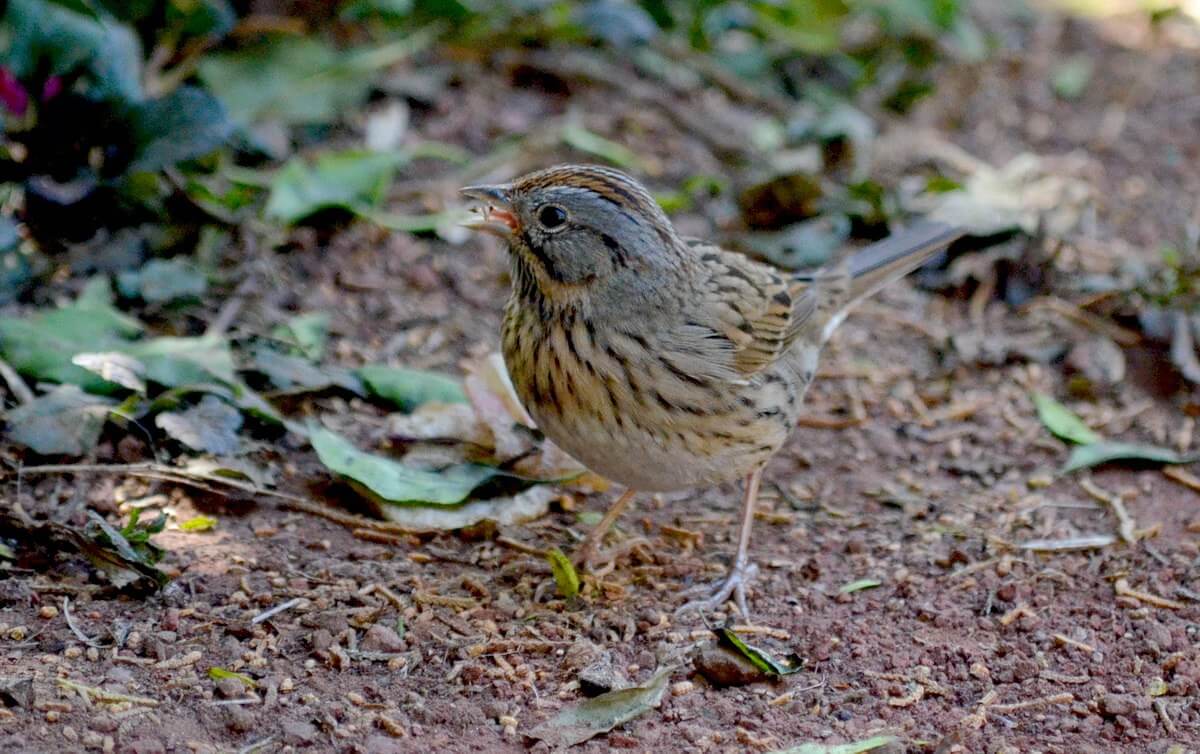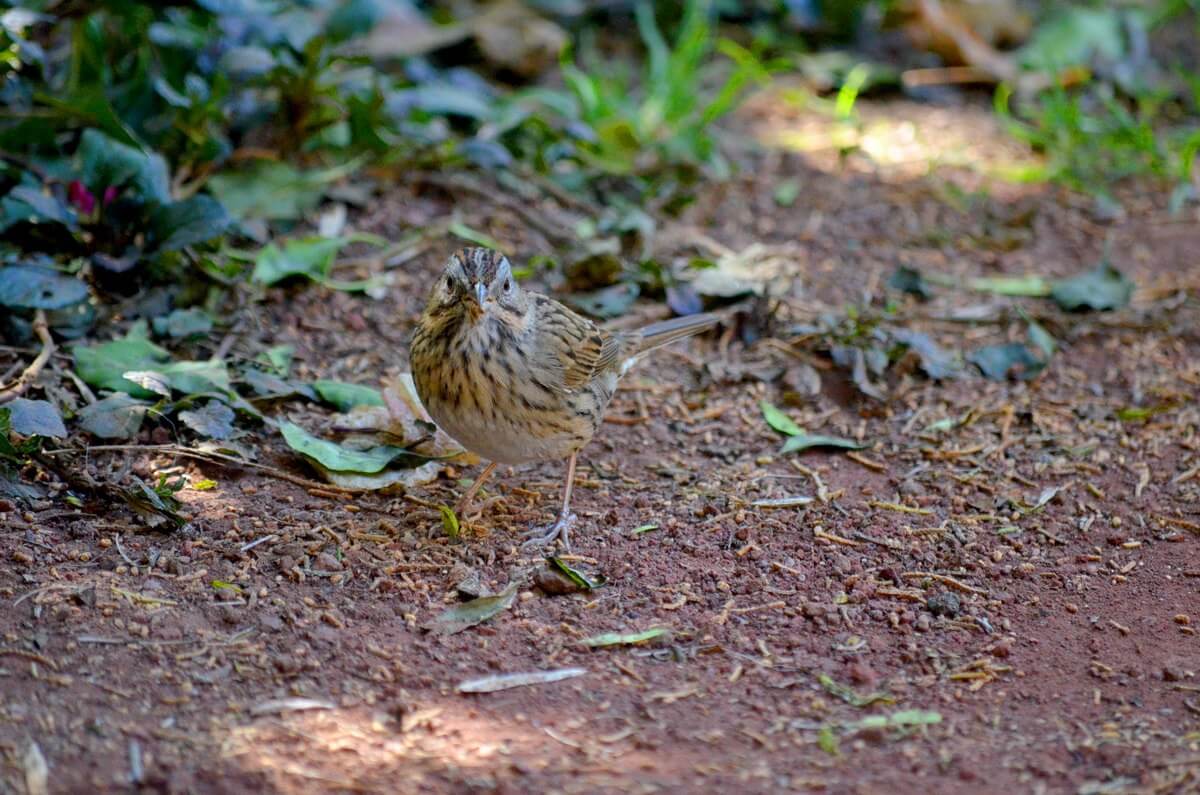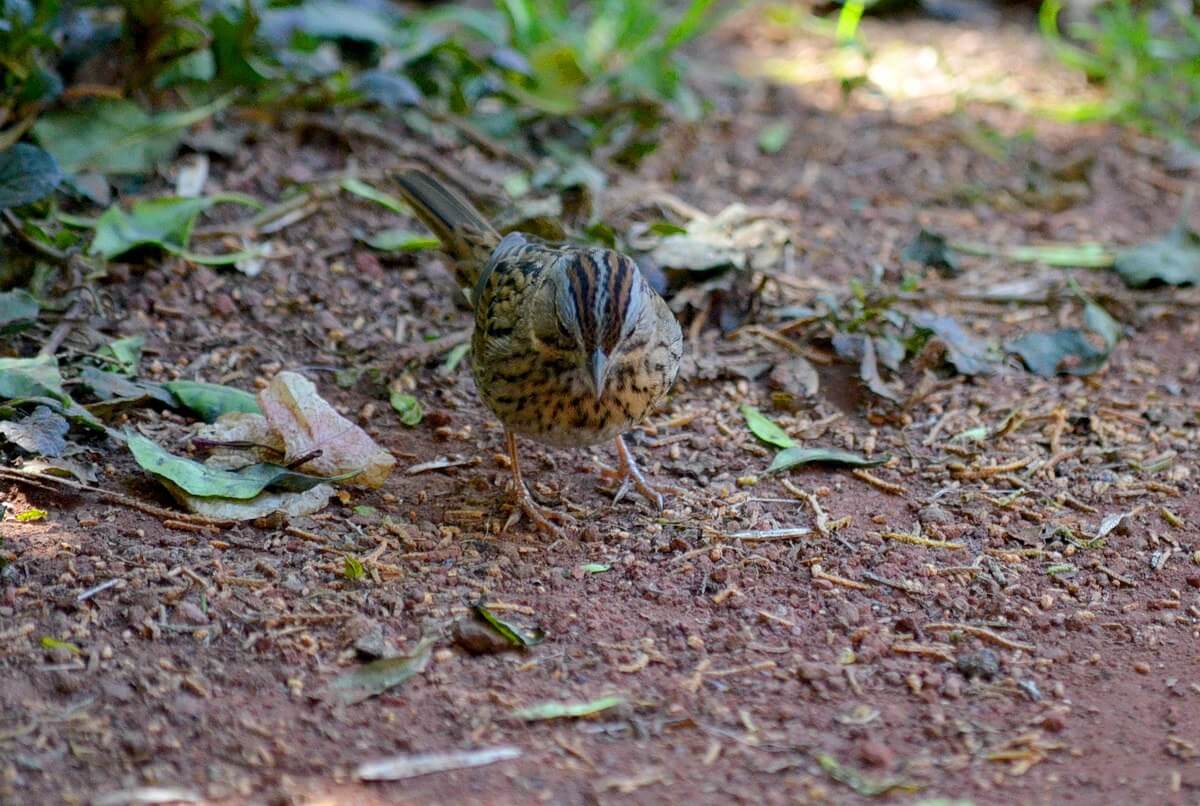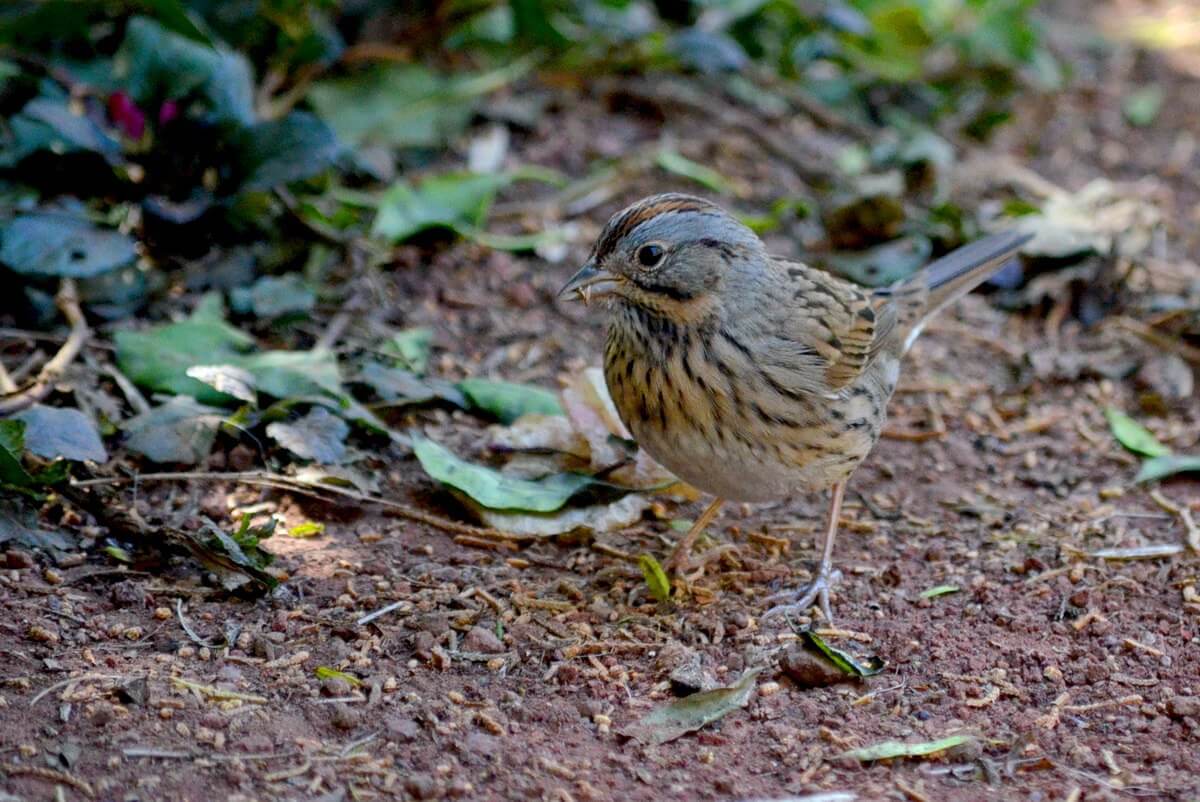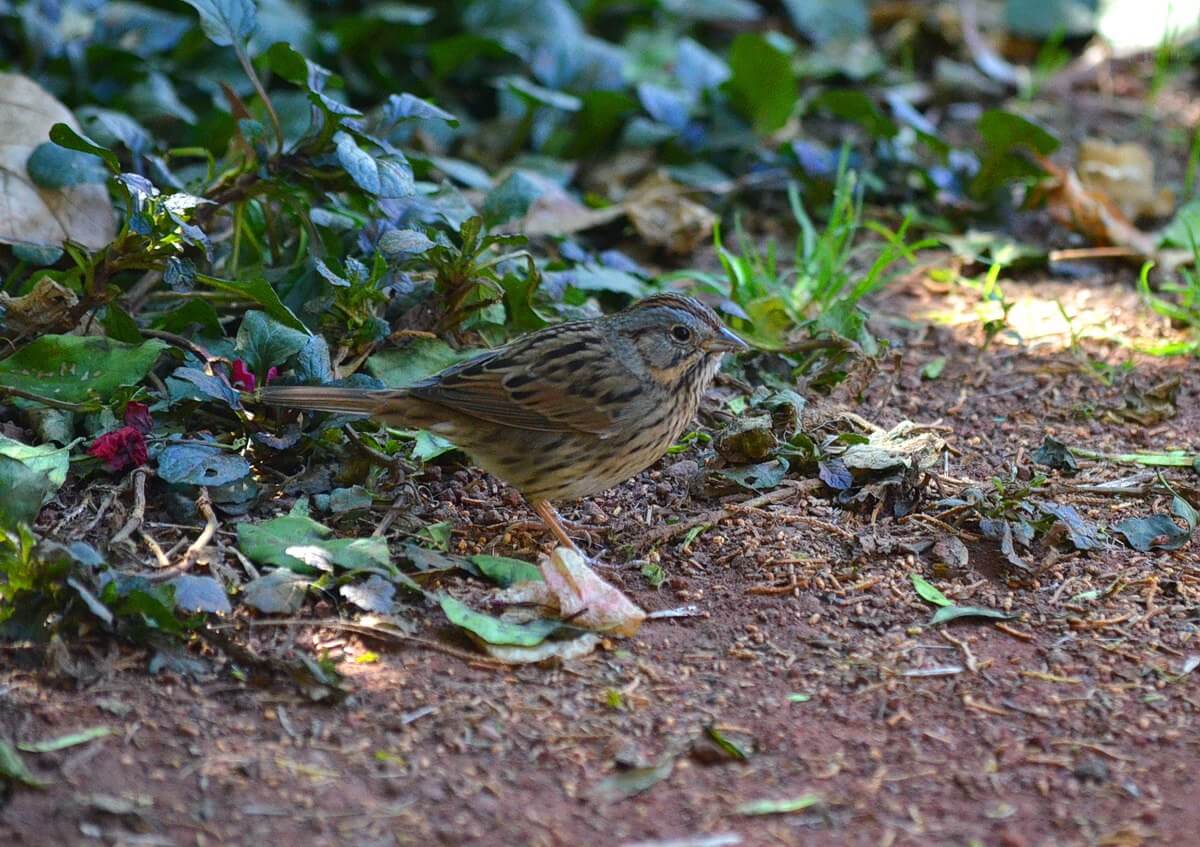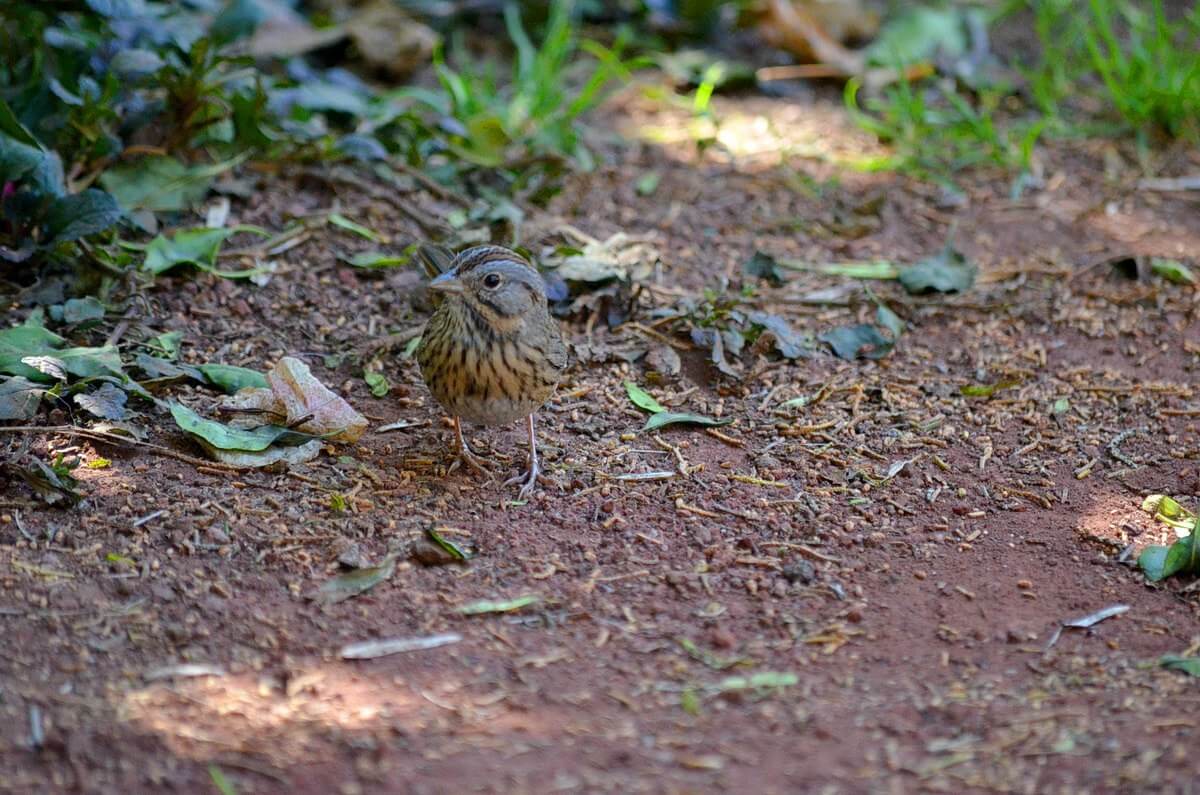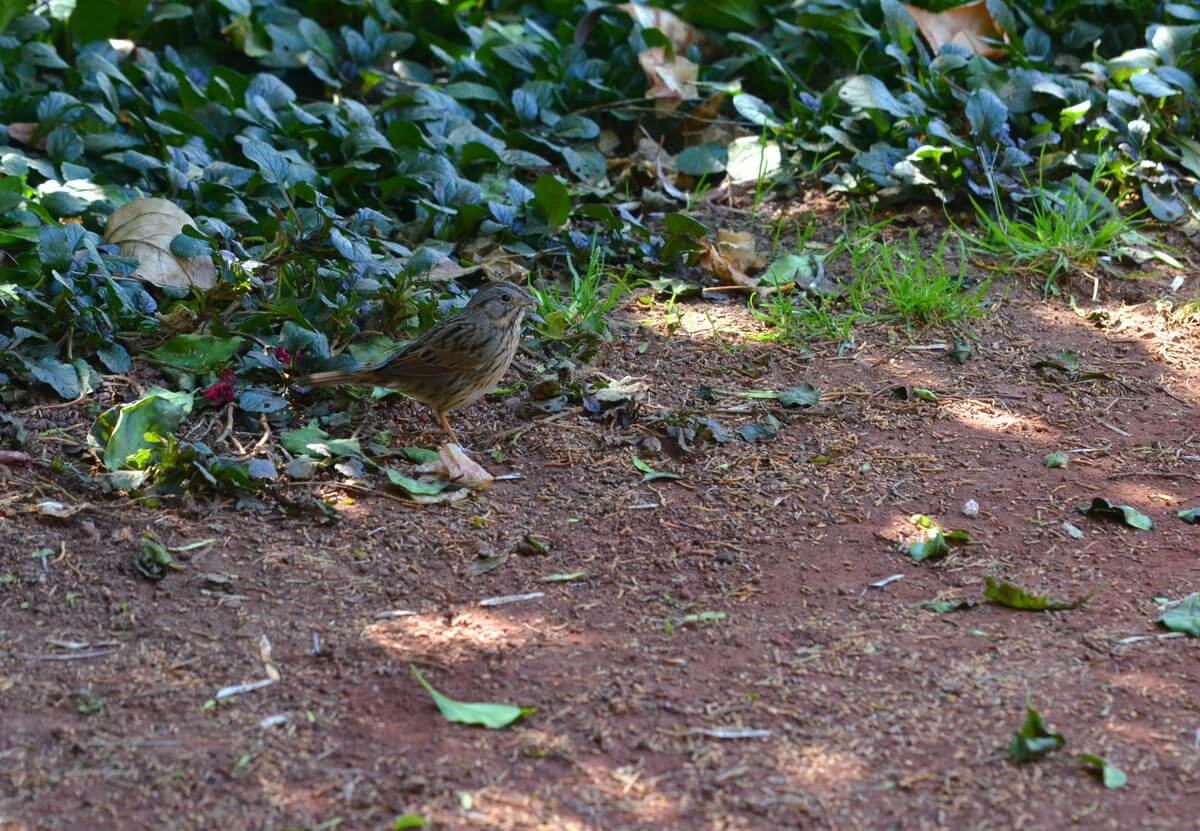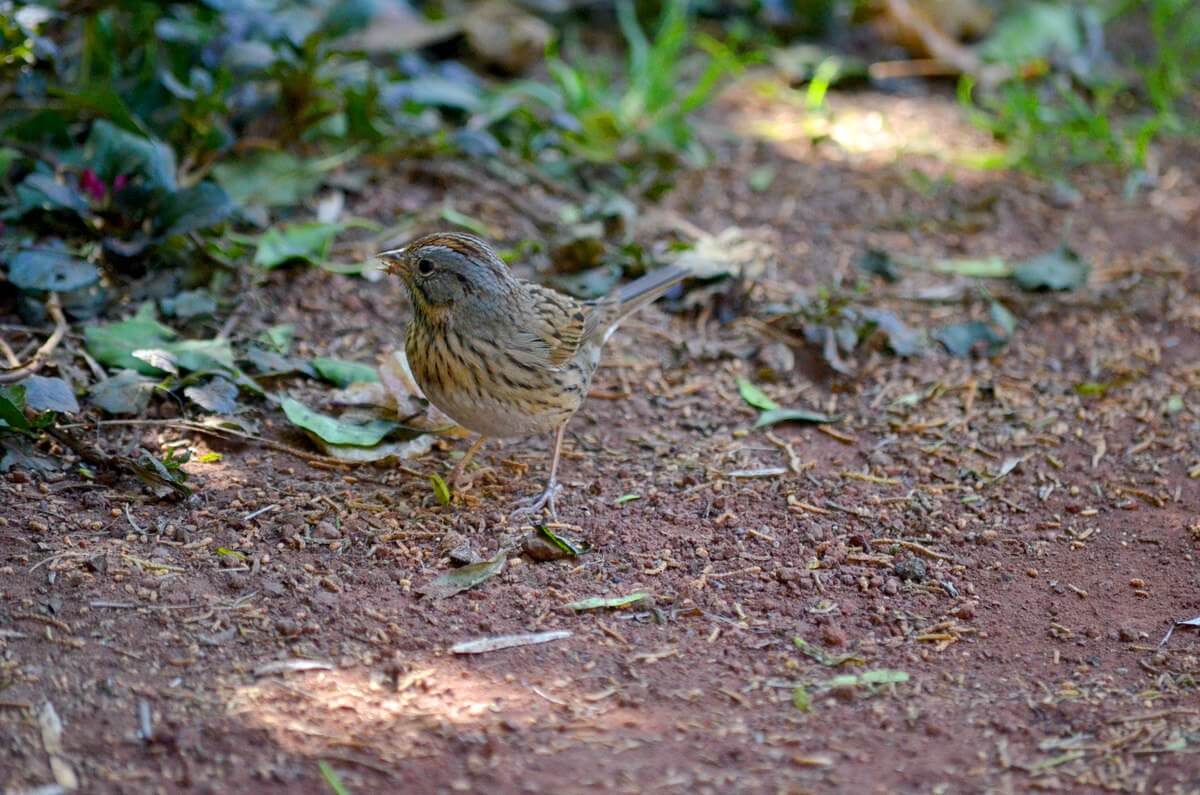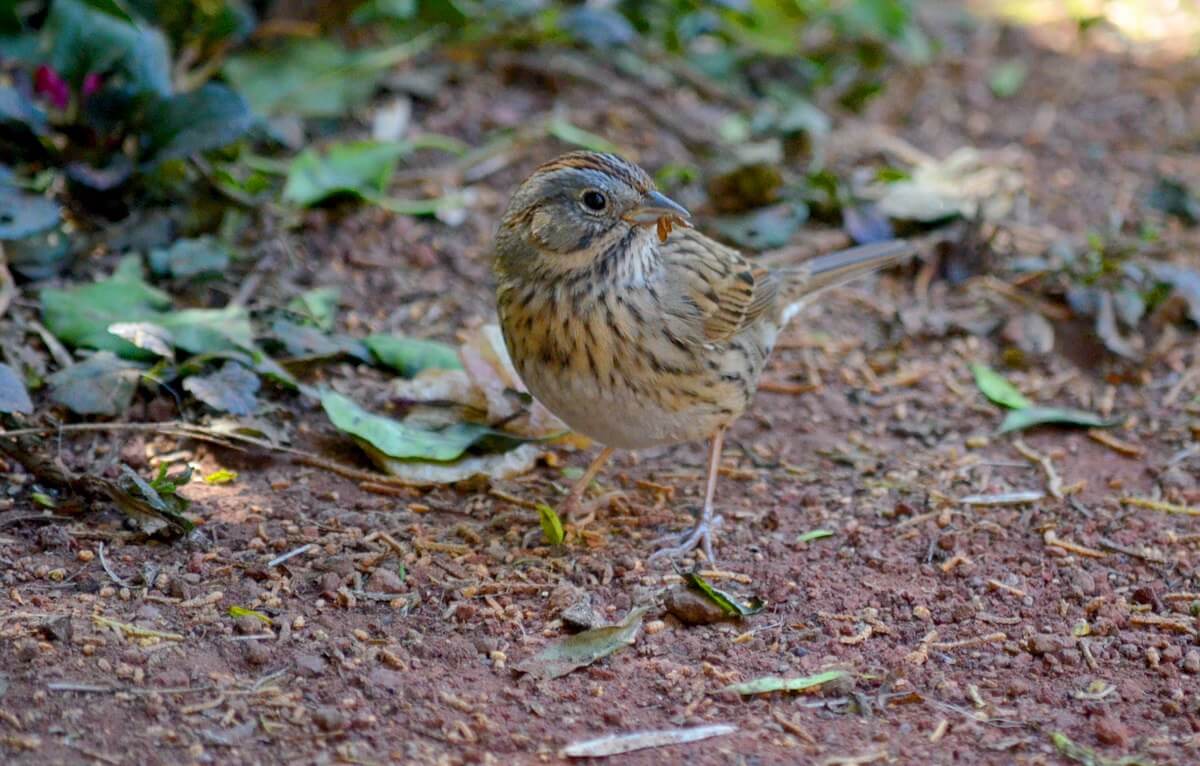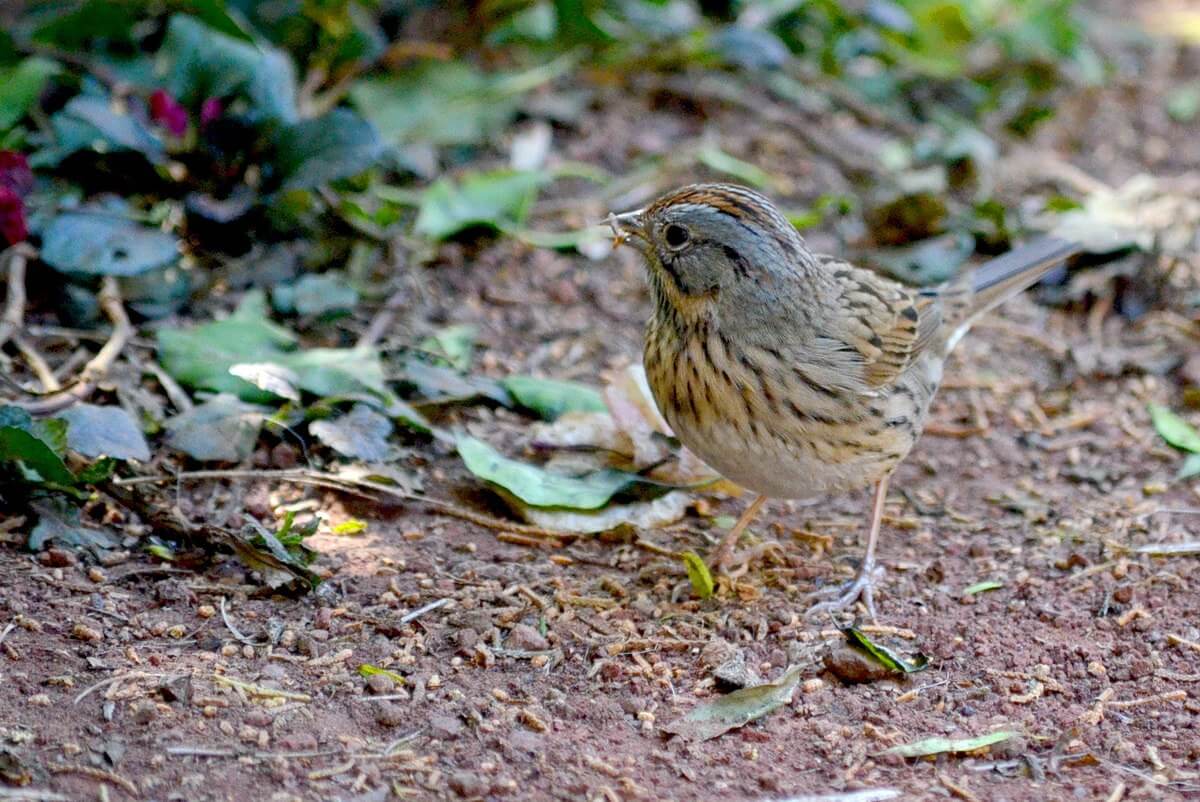Lincolns Sparrow at Hotel Rancho San Cayetano
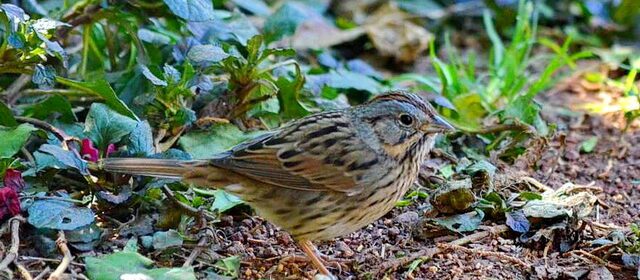
Before we even arrived at Hotel Rancho San Cayetano in Zitacuaro, Mexico, we knew it was going to be someplace special. Not only was the location centrally-located in relation to three nearby monarch butterfly preserves, but it also turned out to be a haven for interesting birds given the lush grounds and proximity to a sheltered river valley. To our surprise, one day at lunch, a brave Lincolns Sparrow (Melospiza lincolnii) fluttered to the ground next to our sunlit table and cast a curious glance our way.
Each morning, before we began our excursions, we savoured a delectable breakfast surrounded by the sounds of spritzing lawn sprinklers, trembling leaves, and soft birdsong,
so we were encouraged to wander the vast hotel property to see what secrets we could uncover.
In this case, however, Bob and I simply spun around in our chairs and delighted in our little visitor as it foraged for its own lunch amongst the ground litter. Lincoln’s Sparrows are considered very secretive birds that are often heard but seldom seen, so we were indeed lucky.
What helped Bob and me recognize this plump-bodied sparrow was the brown crown on its head with the bold grey stripe down the middle.
The sparrow was unfazed by our proximity, so we had an excellent chance to take note of its attractive plumage. The crisp black streaks on its buff-coloured breast continue around onto the flanks, but the belly is in stark contrast being all white. Adding a bit of interest to its overall plumage is the rusty wings, broad grey eyebrow and pale eye ring.
It would be uncommon for Bob and me to see a Lincoln’s Sparrow in our region of Ontario, Canada, and to date, we have never come across one in our travels. Their breeding grounds include a large part of Canada as well as Alaska and a select area in some western and central states of the U.S.A., primarily where a boreal habitat offers suitable dense shrubby conditions.
Migration to their winter grounds takes this species across North America to Mexico and the Honduras, although some of the species simply travel further south along the West Coast and into the southern States.
Lincoln’s Sparrows are not found exclusively in one specific type of habitat because their preference varies with the season of the year and depending on whether or not they are breeding. Although they inhabit sub-alpine and montane regions during the summer breeding season, as they sweep south during migration, they are more apt to take cover in riparian habitats with an abundance of thickets.
The location in Zitacuaro where this Lincoln’s Sparrow was riding out the winter provided an ideal habitat. The tropical forest of deciduous trees that grows on the slopes of the river valley provides both ample cover and freshwater, two important components that will influence this bird’s survival.
It was amusing to see how focused this bird was as it foraged in the dirt at the edge of the patio. Perhaps it was so busy hopping about that our quiet observation went undetected, or maybe it knew that the dense foliage at hand promised a quick escape if need be. If the Sparrow had become agitated, it would have raised its peaked crown.
Like its habitat varies with the seasons, so does the diet of a Lincoln’s Sparrow. As this Sparrow overwinters in Mexico, it will consume primarily seeds from weeds and grasses, whereas more protein is ingested during the summer months with insects, spiders, millipedes and butterflies becoming part of their prey.
Given the secretive nature of these delicate sparrows, and the fact that they generally skulk beneath dense, low cover, it is a wonder that Bob and I saw this Lincoln’s Sparrow at all. Because they do go unnoticed a good share of the time, not much has been documented about their life history. Maybe Hotel Rancho San Cayetano might be a good place to carry out more in-depth observations. It certainly provided us with good lunchtime entertainment.
Frame To Frame – Bob and Jean

